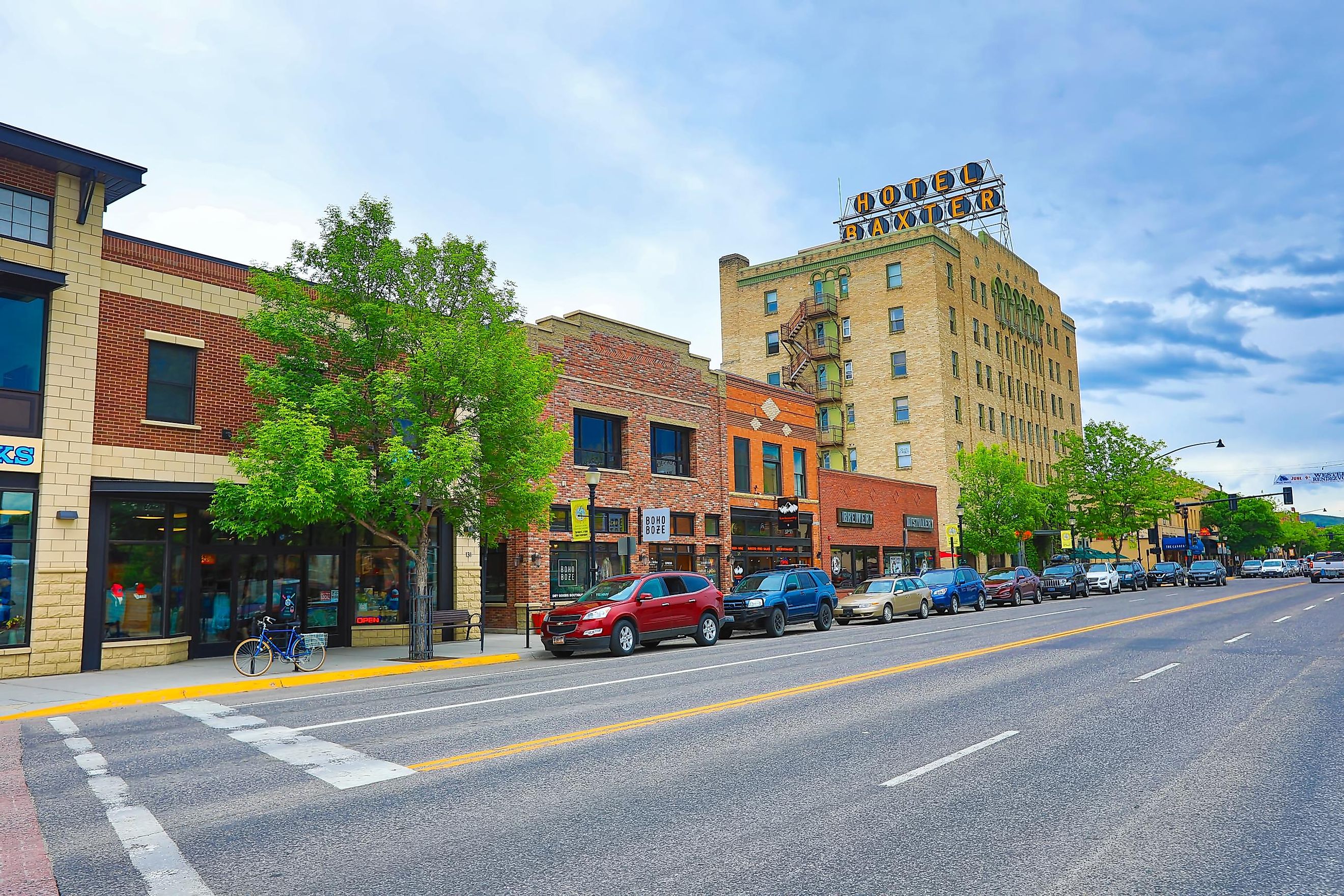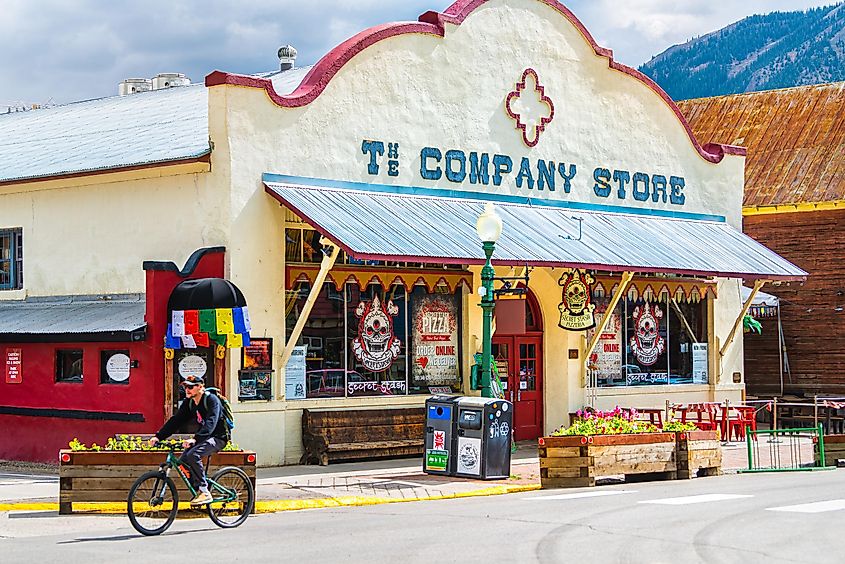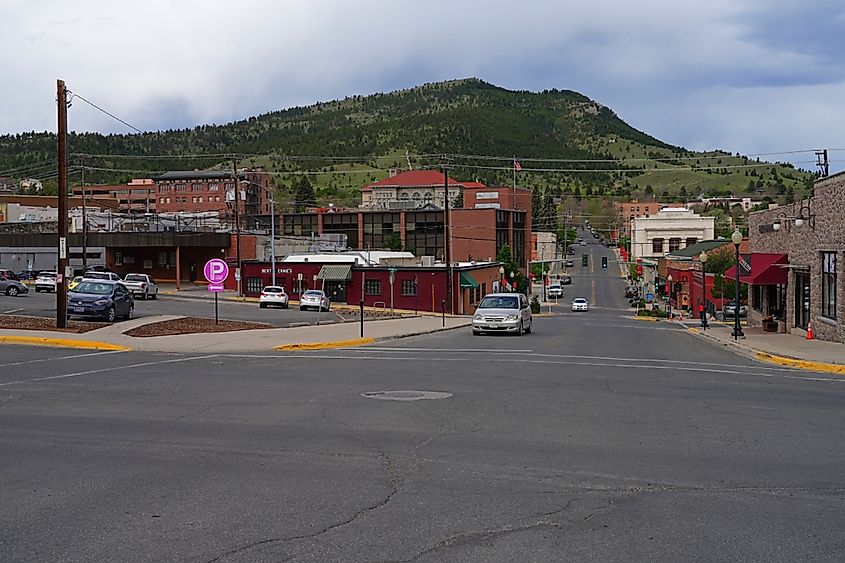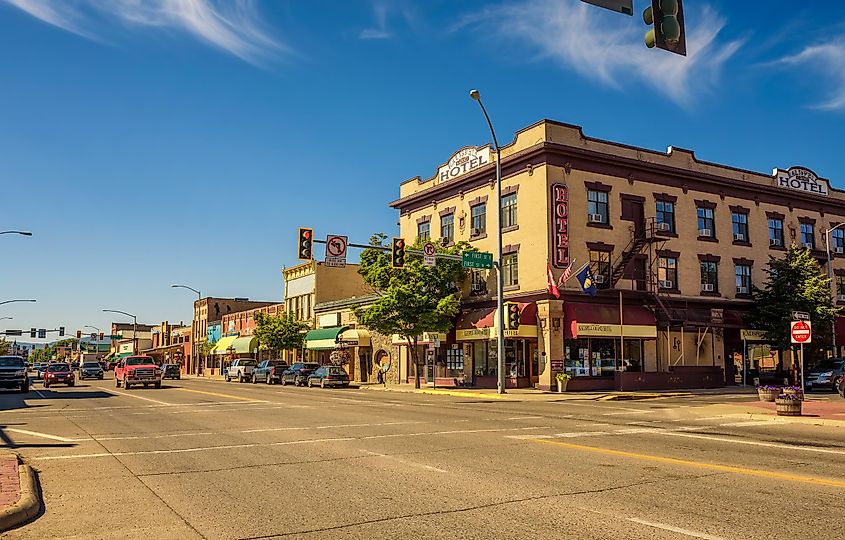
9 Best Places to Live in Montana in 2024
Montana, renowned for its mountain sports and wintertime recreation, is also one of the nation's most sought-after states for residence. With a growing population in its thriving cities and smaller towns, the Treasure State truly lives up to its nickname, a testament to its popularity and quality of life.
Helena, the state capital, is not only picturesque but also conveniently located near both Yellowstone and Glacier National Parks. Contrary to the provided translation, "Kalispell" does not directly translate to “the flat land above the lake.” However, it is situated near Flathead Lake and is known for its gateway to Glacier National Park. Residents enjoy skiing in winter and exploring the trails of the snow-capped mountains. Attracting nature enthusiasts from all walks of life, Montana offers a diverse range of living options, from permanent homes to vacation retreats, all cherished and fiercely protected by those who reside there.
Belgrade

Home to just under 13,000 residents, Belgrade boasts a median household income of $103,860. Despite its relatively high median home price of $534,000, the town has seen rapid growth over the last decade, attributed to its charm and livability. Located in the northwestern part of Montana, it benefits from proximity to Bozeman Yellowstone International Airport, without the tourist crowds, offering a peaceful, resort-free atmosphere. Nestled at the foot of the Bridger Mountains, Belgrade offers year-round outdoor activities such as hiking, camping, and skiing.
Its waterfront location along the Gallatin River, renowned for fly fishing, is particularly attractive to newcomers. With amenities that cater to families, including playgrounds, green spaces, and shopping areas, Belgrade provides a well-rounded community life. The Belgrade School District is known for its quality education, extending through high school. With a poverty rate of 12.64% and a median age of 33.4 years, it's a tranquil place for anyone looking for a combination of natural beauty and community spirit, with opportunities in manufacturing and the steel industry.
Billings

Located just west of Pictograph Cave State Park, Billings is a gateway to natural wonders, appealing to outdoor enthusiasts and families alike. As the state's largest city, with over 124,474 residents, Billings offers an average household income of $95,066. The city, situated along the Yellowstone River, features a vibrant waterfront and a bustling, walkable downtown area. With a lower cost of living than the national average, residents enjoy a high quality of life amidst a thriving arts and culture scene and a burgeoning food scene.
Billings' economy is bolstered by specialized manufacturing, processing, and professional services catering to the surrounding rural area. Home to Billings-Logan International Airport, Montana State University Billings, and cultural attractions like the Yellowstone Art Museum and Moss Mansion Museum, it attracts a mix of young professionals and families. With affordable housing, easy access to nature, and a strong educational system, Billings is an attractive option for those seeking a balanced urban-rural lifestyle.
Bozeman

Bozeman, renowned for its tourism and status as a skiing mecca in the Rockies, is also among the state's most desirable living locations, thanks to its breathtaking mountain views. Although living here isn't inexpensive—with the median house price at $708,923—the city, home to fewer than 60,000 residents, has experienced rapid growth since the millennium. Its prime location in southern Montana, near the stunning Bridger Mountains and offering the best access to Yellowstone National Park, makes it a magnet for nature lovers. The park's 3,500 square miles feature scenic trails, rushing waterfalls, hot springs, and dramatic geysers, amidst diverse wildlife. Bozeman's appeal is broad, boasting an impressive après-ski scene and a vibrant lineup of downtown restaurants, all set against the majestic Rocky Mountains.
The city's dynamism is further enriched by Montana State University, which infuses it with youthful energy and contributes to its family-friendly atmosphere, supported by a number of excellent public schools. The surrounding natural beauty inspires a thriving arts and culture scene, with art galleries, theaters, street festivals, and outdoor concerts. Bozeman offers a median income of $106,862 and has a poverty rate of 14.72%, with a cost of living 11 percent higher than the national average and 13 percent higher than the state average. With a young median age of 28.2 years, the local economy benefits significantly from tourism, with major employment opportunities provided by the state university, public healthcare, the Public School District, and various private businesses.
Butte

Those seeking a unique living experience might find Butte, Montana, an ideal choice. This former mining boomtown offers incredibly affordable housing, with a median home price of $260,229. As the county seat of Silver Bow County and Montana's first major city, Butte, home to 36,422 people, has seen fluctuating population trends but is on a growth path. It boasts a median household income of $79,558, and although the poverty rate stands at 15.76%, it hosts several corporate and international regional headquarters, Montana Tech University, and Highlands College of Montana Tech.
Opportunities abound with employers like the National Center for Health Care Informatics, Pioneer Technical Services, and Northwestern Energy, facilitating a healthy work-life balance. Butte marches to its own beat, with a lifestyle deeply rooted in history that locals are passionate about preserving. It is nestled in Southwest Montana, near the Big Hole River—known for its excellent trout fishing—and just over an hour from Bozeman, providing additional entertainment options. Residents enjoy a tourist-free atmosphere, with easy access to the Continental Divide Trail for hiking, biking, and skiing amidst stunning scenery. The city also offers breweries, restaurants, bars, a weekly farmer’s market, and numerous summer festivals, enhancing its community vibe.
Dillon

Dillon stands out as a top living destination in Montana for several reasons, not least its affordable housing. The town has seen an 11% population increase since 2020, now home to 4,352 people. With a median age of 29.9 years, this county seat of Beaverhead County, housing the University of Montana Western, offers excellent educational opportunities. Despite a higher poverty rate of 22.34%, the median home price remains accessible at $350,293.
Named after a president of the Union Pacific Railroad, Dillon is rich in history and natural resources. The town is minutes away from Clark’s Lookout State Park, offering hiking and camping, and is flanked by fishing streams. With employment opportunities in education, manufacturing, and agriculture, the surrounding ranches offer family-friendly excursions. Dillon’s Main Street is lined with quaint cafes and exudes a tight-knit community feel, welcoming newcomers with open arms. The town also supports a comprehensive educational system, including an elementary, middle, high school, several preschools, and a small local airport.
Great Falls

Situated with the Missouri River running through its heart, and flanked by the Helena-Lewis and Clark National Forest to the south and the Flathead National Forest to the west, Great Falls truly lives up to its name as an exceptional place to reside. The city is proud of its Giant Springs State Park, which houses one of the largest freshwater springs in the U.S. Despite a growing population of 60,452 residents, the community remains close-knit, offering big-city amenities and a vibrant cultural scene. This includes the C.M. Russell Museum, which celebrates the artistry of the American West, and the Paris Gibson Square Museum of Art. Located in beautiful Cascade County, Great Falls is surprisingly affordable, with a median home price of $300,879. Even with a poverty rate of 14.98%, an average household income of $75,826 provides a sense of stability, complemented by the views of the Rockies that surround the city, adding an extra layer of coziness.
Nestled along the mighty Missouri River, Great Falls captivates with its natural beauty and a median-aged population of 38.8 years. Whether one is drawn to cultural pursuits, historical sites, or scenic trails that retrace the steps of Lewis and Clark, the city offers something for everyone. Job opportunities abound in healthcare, social assistance, retail, trade, and hospitality, with the highest paying jobs in mining, quarrying, oil, gas extraction, utilities, and public administration. Downtown is bustling with attractions, from quaint boutiques and delectable eateries to lively events, ensuring a fulfilling work-life balance in the embrace of Big Sky Country.
Helena

Helena, the state capital, is a haven for nature lovers, boasting a central location near some of Montana's most cherished outdoor attractions. With a growing population of 35,515, Helena welcomes a diverse array of tourists, offering activities like fishing, hiking, and kayaking, along with proximity to Yellowstone and Glacier National Parks. Founded during the 19th-century gold rush, Helena was once among the wealthiest cities in the U.S. Today, it remains prosperous, with an average household income of $90,089 and a poverty rate of 10.14%, serving as the county seat of Lewis and Clark County.
The city's small-town feel, combined with a median age of 39.9 years, makes it ideal for both singles and families looking for a balance between a vibrant city life and tranquil natural surroundings. Helena's access to over 60 natural and 15 commercial hot springs is a significant draw, offering residents a daily retreat to unwind. The capital's affordable neighborhoods, close to nature, attract families and young professionals with a median home price of $438,126, slightly below the state average cost of living. Helena's economy thrives on government agencies, small businesses, textile operations, maintenance jobs, and computer software engineering. The city's stable economy has recently seen growth in sectors like education, environmental services, and construction, enhancing its appeal as a place to live.
Kalispell

Strategically located as the city closest to Glacier National Park, Kalispell, situated in Flathead County, stands out as an exceptional choice for residence. It's not just humans who are drawn to the area; wildlife thrives in the surrounding landscapes. Nestled in the Rockies, Kalispell has seen rapid growth since 2020 and now boasts a population of 32,726. With a median household income of $75,192 and a poverty rate of 10.37%, the city has a relatively young median age of 35.8 years. Kalispell attracts a diverse group, including nature lovers, adventurers, entrepreneurs, families, young professionals, and remote workers, all finding balance in its inspiring scenery and varied job market. The name 'Kalispell' is derived from a Salish word meaning “flat land above the lake,” and residents enjoy easy access to attractions like the Hungry Horse Dam, serene lakeside retreats, and thrilling mountain trails, often eliminating the need for vacations elsewhere.
Kalispell is both secluded and vibrant, rich in culture and entertainment options, including local theaters, art galleries, and farm-to-table restaurants. When not engaged in outdoor activities in the Flathead Range, residents can visit Wild Horse Island, the Hockaday Museum of Art, or the Conrad Mansion. The city prides itself on top public schools and major employers like the Kalispell Regional Medical Center and Weyerhaeuser. Serving as the trade center of Flathead County, Kalispell enjoys a stable economy, offering a mix of boutique shops, artisan cafes, and cultural events downtown at a median home price of $525,192.
Livingston

Livingston, a small city in southwest Montana along the Yellowstone River, has experienced steady growth since 2020, reaching a population of 9,114 in 2024. As the county seat of Park County, it features an average household income of $78,675 and a poverty rate of 14.02%, with a median age of 42.4 years. With home prices 2.3% lower than the previous year, the median house price of $508,224 affords residents a scenic location and opportunities for a healthy lifestyle. Livingston is celebrated for its quality of life, including work-life balance, particularly as the northern gateway to Yellowstone National Park.
Outdoor enthusiasts would find the proximity to Yellowstone—a natural "gym"—worth the investment. The Yellowstone River offers peaceful settings for strolls or lunch breaks, and weekends can be filled with activities like fly fishing and hiking. The cost of living in Livingston aligns with the Montana average, supporting a vibrant local scene of restaurants, microbreweries, bars, and saloons.
Unspoiled Montana
Montana, the "Big Sky State," is renowned for its pristine nature, with the Rockies rising majestically against the sky, which becomes a canvas of stars at night. The state exemplifies work-life balance, with its towns and communities offering unique charm and a high quality of life.
Dillon and Great Falls are highlighted as the most affordable small towns and cities, respectively, each with charming streets and rich histories. From springtime wildflowers and meandering rivers to summertime greenery along clear lakes and colorful fall landscapes in state parks, Montana presents a variety of options for those seeking a high-quality life embedded in local lifestyles.











